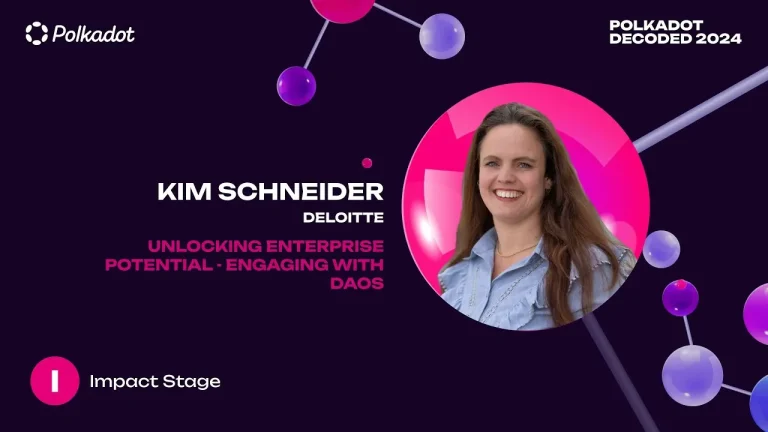One of the most persistent challenges has been the isolation of niche communities. This issue is particularly pronounced in ecosystems like Polkadot, where the potential for innovation is vast, yet the base of new users and developers remains relatively small. This article delves into the underlying causes of community isolation within Web3 ecosystems, using the example of Polkadot, and explores potential solutions to bridge this gap, thereby fostering broader adoption and engagement.
Understanding the Problem of Isolation in Niche Communities
Community isolation in Web3 ecosystems refers to the phenomenon where a specific set of users—often highly technical or deeply invested in the project—dominate the conversation and activity, while the influx of new participants remains stagnant. This scenario mirrors the experience of hardcore MMOs like Life is Feudal (LiF), where a committed group of players remains active, but the game fails to attract new users despite reopening under new management. The comparison between niche gaming communities and Web3 ecosystems like Polkadot is apt, as both involve complex social systems hard difficult learning curves that can be intimidating for newcomers.
Potential Factors Contributing to Community Isolation
- Inefficiency and Poor Management: One of the key factors in the failure of niche communities to grow is inefficiency in management and direction. In the case of LiF, constant changes in direction and poor management alienated potential new players. Similarly, Web3 projects that lack clear, consistent leadership and direction may struggle to attract and retain new users.
- Complicated Learning Curves: Both MMOs and Web3 ecosystems like Polkadot can be daunting for beginners. The steep learning curve, coupled with a lack of user-friendly interfaces, can deter new users from fully engaging with the platform. In the case of Polkadot, tools like polkadot.js have been particularly challenging for newcomers, creating a barrier to entry in the ecosystem early days.
- Lack of Progress and Development: Continuous development and visible progress are crucial for maintaining and growing a community. When a project appears stagnant, it loses its appeal to both existing and potential users. Open-source development, where the community can actively participate, may help mitigate this issue by fostering a sense of ownership and progress. In this case, the Polkadot ecosystem is outstanding in this task by having one of the most active developer communities in the blockchain industry.
The Role of Open Governance in Addressing Isolation
One potential solution to the problem of community isolation is the implementation of open governance systems like Polkadot’s OpenGov. OpenGov allows active participants to have a say in the project’s direction, fostering a more inclusive and engaged community. What would have happened to the Life is Feudal MMO if it had a similar open system to handle the direction of that game and the social model formed around it?
In the context of Polkadot, OpenGov provides a mechanism for developers, creators, and even end-users to participate in the governance of the ecosystem. This participatory model can help break down barriers to entry, as new users feel more empowered to contribute and influence the project’s direction. Moreover, it aligns with the ethos of decentralization, where no single entity holds all the power, and decisions are made collaboratively.
Benefits of Polkadot OpenGov and On-Chain Governance
- Enhanced Community Engagement: By giving users a voice in governance, OpenGov can increase engagement and retention, as participants feel their contributions are valued and impactful.
- Transparency and Trust: Open governance fosters transparency, which builds trust within the community. Users are more likely to stay involved in a project where they feel the decision-making process is fair and open.
- Adaptability: Open governance allows for more adaptable project management. As the community identifies new needs or challenges, governance can pivot to address these in real-time, avoiding the stagnation that often plagues niche communities.
Simplifying the User Experience to Attract New Participants
Another critical factor in addressing community isolation is simplifying the user experience. For Polkadot and similar ecosystems, this means improving interfaces, providing better documentation, and creating intuitive onboarding processes.
Strategies for Simplifying the User Experience
- User-Friendly Interfaces: Platforms like Polkadot need to prioritize the development of user-friendly interfaces that lower the entry barrier for newcomers. This includes simplifying tools like polkadot.js and ensuring that interacting with the ecosystem is as intuitive as possible.
- Comprehensive Onboarding: A well-designed onboarding process can significantly reduce the learning curve. This could include interactive tutorials, beginner-friendly resources, and guided pathways that help new users gradually familiarize themselves with the platform’s features and capabilities.
- Community-Driven Support: Establishing a robust support system, driven by the community, can provide new users with the help they need when encountering challenges. This could involve forums, mentorship programs, and a dedicated support team to answer questions and guide users through their initial experiences.
The Importance of Diverse Communication Channels
While platforms like Twitter/X have become the default communication channels for many Web3 projects, relying solely on these channels can contribute to the isolation of niche communities. As seen in the Web3 industry, particularly within Polkadot, a “bubble” has formed where ecosystems and projects primarily communicate within their own circles, limiting their reach to new audiences.
Expanding Beyond Traditional Channels
- Alternative Social Platforms: Exploring and utilizing alternative social platforms can help reach a broader audience. This could include platforms that cater to different demographics or those that offer unique engagement features not available on Twitter/X.
- Offline and In-Person Engagement: While online platforms are crucial, there is also significant value in offline engagement. Hosting events, participating in conferences, and creating opportunities for face-to-face interactions can help build stronger, more connected communities.
- Collaborative Content Creation: Encouraging collaboration between different projects, media outlets, and creators within the ecosystem can help cross-pollinate ideas and audiences. This approach not only fosters a sense of community but also helps break down silos that contribute to isolation.
The Role of PPC in Outreach and Its Limitations
Pay-per-click (PPC) campaigns have long been a go-to strategy for reaching new audiences quickly. However, PPC is not a panacea for community isolation, particularly in complex and niche ecosystems like Polkadot. While PPC can drive short-term engagement, it often fails to build the long-term, organic communities necessary for sustained growth.
The Role of PPC Campaigns in Polkadot’s Ecosystem
- Short-Term Engagement: PPC can be effective for generating short-term interest and driving traffic to specific initiatives or products within the Polkadot ecosystem. This can be particularly useful for launching new projects or raising awareness about major updates.
- Data Collection: PPC campaigns can also be valuable for collecting data on user behavior and preferences, helping to inform future marketing strategies.
Limitations of PPC
- Lack of Long-Term Impact: PPC campaigns often do not translate into long-term community engagement. Once the campaign ends, the influx of new users typically drops off, and the community remains isolated.
- No Organic Growth: PPC does not contribute to organic community growth. Building a sustainable community requires consistent, high-quality content and genuine engagement, which cannot be achieved through PPC alone.
- Focus on Well-Defined Products: PPC is most effective when promoting well-defined products or services with clear value propositions. For ecosystems like Polkadot, where the focus is on technology and decentralization, PPC may not resonate with the target audience as effectively as organic, community-driven efforts.
Building Web3 Organic Communities: The Path Forward
To overcome the challenge of community isolation, the focus should shift from short-term marketing tactics like PPC and momentary sponsorships to long-term strategies that build organic communities. This involves creating high-quality, accessible products, fostering collaboration, and encouraging the emergence of dedicated communicators who can champion the ecosystem’s values and vision.
Key Strategies for Building Web3 Organic Communities
- Developing Intuitive Products: The foundation of any successful community is a product that users love and find easy to use. For Polkadot, this means continuing to refine the user experience, making the technology more accessible to non-technical users, and ensuring that interacting with the platform is as seamless as possible.
- Empowering Community Leaders: Identifying and supporting community leaders who are passionate about the ecosystem can help drive organic growth. These leaders can serve as ambassadors, educators, and mentors, helping to onboard new users and keep existing ones engaged.
- Fostering Collaboration: Encouraging collaboration between different projects, developers, and content creators within the ecosystem can lead to innovative solutions and new ways of engaging with the community. This collaborative spirit can help break down barriers and create a more inclusive, connected ecosystem.
- Sustained Content Creation: Consistent, high-quality content is essential for maintaining community engagement. This includes educational resources, updates on ecosystem developments, and thought leadership pieces that inspire and inform the community.
Conclusion: Moving Beyond the Bubble
The problem of community isolation in Web3 ecosystems like Polkadot is complex, but not insurmountable. By focusing on open governance, simplifying the user experience, diversifying communication channels, and building organic communities, Polkadot can break free from the constraints of its niche and reach a broader audience. While PPC and traditional marketing tactics have their place, the long-term success of the ecosystem will depend on its ability to foster genuine, sustained engagement through innovative products, inclusive governance, and a commitment to decentralization.
As the Web3 industry continues to evolve, the lessons learned from niche communities like hardcore MMOs and the current state of Polkadot can serve as a guide for building more resilient, inclusive, and thriving ecosystems. By embracing these strategies, Polkadot can lead the way in demonstrating how decentralized technologies can achieve widespread adoption and create lasting value for all participants.








